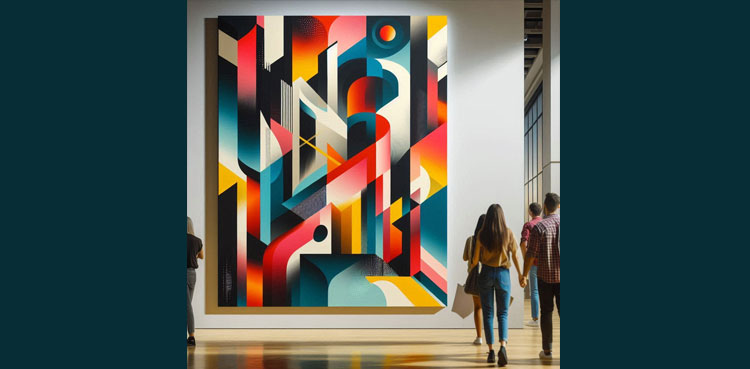
Abstract art is a genre of visual art that emphasizes the use of shapes, colors, forms, and gestural marks to create compositions that may exist with a degree of independence from visual references in the world. Here’s a breakdown of some key aspects:
Key Characteristics
Non-Representational: Unlike traditional art, which strives to depict objects or scenes accurately, abstract art does not represent identifiable subjects. This means that the artwork doesn’t imitate or replicate the physical appearance of the real world.
Focus on Elements of Art: Abstract artists prioritize elements like color, line, shape, form, texture, and composition. These elements are used independently to evoke emotions, thoughts, or responses from the viewer.
Expression and Emotion: Abstract art often aims to convey an artist’s inner experiences or emotions. The absence of concrete imagery allows viewers to interpret and find their own meaning in the artwork.
Innovative Techniques: This genre encourages experimentation with materials and techniques. Artists often use unconventional methods and materials to create their works.
Historical Background
Abstract art gained prominence in the early 20th century with movements such as Cubism, Futurism, and Abstract Expressionism. Pioneers like Wassily Kandinsky, Kazimir Malevich, and Piet Mondrian broke away from traditional artistic conventions, leading to a new way of seeing and creating art.
Types of Abstract Art
Geometric Abstraction: Focuses on geometric shapes and a clear use of color (e.g., works by Piet Mondrian).
Lyrical Abstraction: Emphasizes a more fluid and expressive use of line and color (e.g., works by Wassily Kandinsky).
Action Painting: Involves dynamic, spontaneous techniques where paint is dripped, splattered, or smeared on the canvas (e.g., works by Jackson Pollock).
Abstract art invites viewers to engage with artworks on a deeper level, prompting personal interpretations and emotional responses.

0 Comments